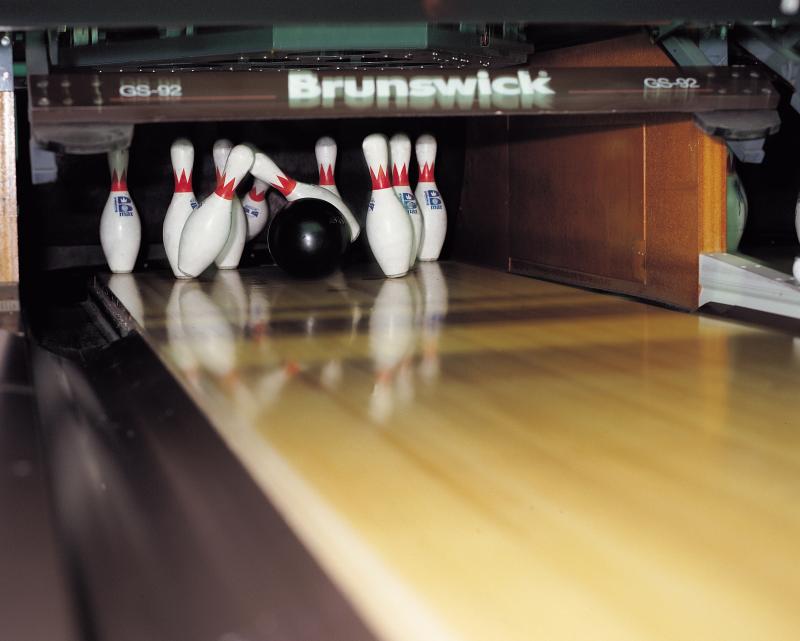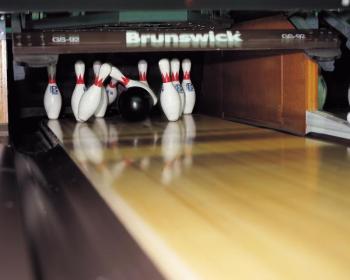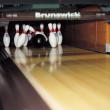Indoor amusement businesses receive guidance to reopen
AUGUSTA — The checklists for businesses falling under Phase 3 of Maine’s reopening plans have been released.
The following is what indoor entertainment and amusement businesses, such as bowling alleys and arcades, must do to reopen amid the COVID-19 pandemic.
Phase 3: Indoor Amusement
Indoor entertainment and amusement venues bring people from different households into close contact with each other, potentially for a prolonged period, and have the potential to increase COVID-19 transmission. The primary tools to control the spread of COVID-19 are to reduce exposure to respiratory droplets through physical distancing and face coverings, increase hand hygiene, and avoid shared items and common touch surfaces. The goals of this guidance are to protect employees, guests, and the local community from COVID-19 infection.
General Guidance
- Require all employees, vendors, and guests to maintain 6 feet of physical distance from individuals who are not part of their household group whenever possible.
- Require all employees, vendors, and guests to wear a face covering when physical distancing is difficult to maintain, per CDC recommendations and pertinent Executive Orders from the Office of the Governor. Because guests will be in an enclosed space for a prolonged period, it is strongly recommended to wear face coverings even when physically distanced.
- Because interacting with more people raises your risk, employees who interact directly with many guests (e.g. ticket takers) are encouraged to wear a face shield, in addition to a face covering.
- Face coverings do not need to be worn while an individual is eating or drinking.
- Additional information about proper use of face coverings is available from the CDC (see: Use of Cloth Face Coverings to Help Slow the Spread of COVID-19).
- The number of individuals that can gather in a shared space must not exceed the limit established by the Governor’s Executive Order, currently set at 50 people.
- If a space cannot accommodate the gathering limit without complying with the six-foot distancing requirement, occupancy must be limited to allow for such compliance.
Cleaning and Disinfection
- Refer to the following documents for guidance on general cleaning and disinfection:
Staff
- Staff should consider whether they can work safely if they have any of these conditions and managers should discuss potential risks for individuals with the following:
- People 65 or older
- People who live in a nursing home or long-term care facility
- People of all ages with underlying medical conditions, particularly if not well controlled including:
- People with chronic lung disease or moderate to severe asthma
- People who have serious heart conditions
- People who are immunocompromised: Many conditions can cause a person to be immunocompromised, including cancer treatment, smoking, bone marrow or organ transplantation, immune deficiencies, poorly controlled HIV or AIDS, and prolonged use of corticosteroids and other immune weakening medications
- People with severe obesity (body mass index [BMI] of 40 or higher)
- People with diabetes
- People with chronic kidney disease undergoing dialysis
- People with liver disease
- Staff should stay at home if they are sick. Supervisors should ask all staff to self-screen for COVID-19 symptoms using either of the following approaches:
- Use an electronic or app-based self-screening form, such as the Coronavirus Self-Checker available on the federal CDC’s homepage.
- Self-screen using the following questions:
- Do you feel ill or have you been caring for someone who is ill?
- In the past two weeks, have you been exposed to anyone who tested positive for COVID-19?
- Require employees to practice good hand hygiene with frequent handwashing, especially after contact with other individuals or high-touch surfaces.
- Conduct business by phone or internet to the greatest extent practicable.
- Limit in-person gatherings or meetings of employees to the greatest extent practicable.
- Where possible, stagger employee shifts and meal breaks to avoid crowding.
- Adjust seating in break rooms and other common areas to promote physical distancing practices.
- Permit employees to take breaks and lunch outside, or in such other areas where physical distancing is attainable.
- Discourage employees from using colleagues’ phones, desks, workstations, radios, handhelds/wearables, or other office tools and equipment.
- Limit interactions between employees and outside vendors or delivery drivers; implement touchless receiving practices if possible.
- Request that vendors accessing the premises direct their employees to follow all physical distancing guidelines and health directives issued by the applicable public authorities.
- Adjust training/onboarding practices to limit number of people involved and allow for 6 foot spacing; use virtual/video/audio training when possible.
- Provide employees training on:
- hand hygiene
- physical distancing guidelines and expectations
- monitoring personal health
- proper wear, removal, and disposal of Personal Protective Equipment (PPE)
- laundering of face coverings and uniforms: Cleaning and Disinfecting Your Facility, How to Disinfect: Laundry (CDC)
- cleaning protocols, including how to safely and effectively use cleaning supplies: Guidance for Cleaning and Disinfecting Public Spaces, Workplaces, Businesses, Schools and Homes (CDC)
- Consider employee training in safe de-escalation techniques.
Communicating COVID-19 Policies
- Inform guests of your COVID-19 policies and procedures in advance, if possible, via website, newsletters, social media channels, newspaper, ticket purchasing site, etc.
- Place signage at entrances and throughout venue (particularly high traffic areas such as service counters) alerting employees and guests to required occupancy limits, physical distancing requirements, face covering policies, symptoms of COVID-19, and other health and hygiene reminders. The federal CDC has developed free, printable posters on these topics (see: Print Resources).
- It is strongly recommended that businesses remind patrons that if they are ill (e.g. have a fever or cough) they should not visit. Signage reminding patrons of the signs and symptoms of COVID-19 is highly recommended.
- Consider using announcements and/or recorded messages to communicate COVID-19 policies to guests during their time at the venue.
Operational Considerations
- Ensure that staffing is sufficient to enable enhanced cleaning and disinfection measures and enforcement of new safety guidelines.
- Ensure adequate supplies (e.g., soap, paper towels, hand sanitizer, tissue) to support healthy hygiene practices, including increased cleaning and disinfection procedures.
- Take steps to improve ventilation in any buildings on the premises.
- Increase the percentage of outdoor air (e.g., using economizer modes of HVAC operations) potentially as high as 100% (first verify compatibility with HVAC system capabilities for both temperature and humidity control as well as compatibility with outdoor/indoor air quality considerations).
- Increase total airflow supply to occupied spaces, if possible.
- Disable demand-control ventilation (DCV) controls that reduce air supply based on temperature or occupancy.
- Consider using natural ventilation (i.e., opening windows if possible and safe to do so) to increase outdoor air dilution of indoor air when environmental conditions and building requirements allow.
- Take steps to ensure that all water systems and features (for example, drinking fountains) are safe to use after a prolonged facility shutdown to minimize the risk of disease. Further guidance is available from the CDC (see: Guidance for Reopening Buildings After Prolonged Shutdown or Reduced Operation).
- Consider restricting the use of water fountains to refill only with instruction for employees and guests to wash or sanitize hands after use.
- Consider installing non-porous physical barriers such as partitions or plexiglass barriers to protect employees and guests. Barriers should be placed at information desks, service counters, and other similar locations where it is not possible to maintain a minimum of 6 feet of physical distance.
- Limit activities that require individuals to enter within 6 feet of another person, regardless of whether physical barriers are installed.
- Modify building/venue traffic flow to minimize contact between employees, vendors, and guests. Use floor decals and/or signage to establish travel patterns.
- Consider one-way entrances and exits, if possible.
- Consider establishing one-way travel patterns through the venue.
- Minimize traffic in enclosed spaces, such as stairwells and other spaces that do not allow for appropriate physical distancing. Consider limiting the number of individuals in an elevator at one time and designating one directional stairwells.
- Ensure your First Aid protocols address how to manage guests or employees with COVID-19 symptoms. If an individual becomes ill at your venue, have a plan for a room or space where the person can be isolated until transferred home or to a health care facility and provide a face covering or mask, if available and tolerated.
- For contact tracing purposes, to the extent practicable, establishments should maintain a record including contact information for employees and guests who have direct prolonged interaction.
- Based on current knowledge, a close contact is someone who was within 6 feet of an infected person for at least 15 minutes starting from 48 hours before illness onset until the time the patient is isolated. Close contacts should stay home, maintain social distancing, and self-monitor until 14 days from the last date of exposure.
- Establishments should promptly notify the Maine DHHS, CDC or any local health official if a they learn an employee or other worker has tested positive for COVID-19 and assist all such officials as reasonably requested to trace likely contacts and advise contacts to isolate and self-quarantine.
- Food and beverage operations should follow state guidance on safe operation of restaurants.
- Drink or food refills should not be allowed unless served in a clean unused container.
- Minimize self-service areas such as drink stations. To the extent possible, use contact-less dispensers to minimize hand touching. Replace multi-use condiments with single-serve packets. Other suggestions to minimize multi-touch surfaces include providing single-wrap utensils, straws, and lids at any take-out or self-seating point of sale. Any self-service areas require frequent cleaning and disinfection
- Use of prepackaged food and beverages is encouraged.
- Consider where lines may form around food service operations and implement the guidance described in the “Arrival and Queuing Areas” section of this guidance.
- Retail spaces should follow state guidance on safe operation of retail businesses.
- Minimize shared touch surfaces such as pens, tablets, receipts, etc.
- Provide disposable or single-use items whenever possible. This could include scorecards, pencils/pens, 3D glasses, etc. If disposable replacements cannot be provided, properly clean and disinfect items between uses.
- High-contact areas such as doorknobs, counters, and interactive displays should be cleaned frequently. Consider providing sanitizing wipes near these locations.
- Evaluate locker/personal storage arrangements. Close or rotate sections to allow for appropriate physical distancing. Consider positioning an employee in the locker/storage area to limit the number of people in the space at one time. Clean and disinfect locker areas frequently.
- Rented or shared items including pool cues, pool balls, putters, golf balls, bats, helmets, ice and roller skates, and any other equipment should be cleaned and disinfected between each use. To the greatest extent possible, equipment should not be shared between individuals who are not part of the same household group.
- If applicable, consider using disposable VR mask covers in addition to standard cleaning and disinfection practices.
- Close ball pits, foam pits, indoor playgrounds, inflatables, etc. as those areas promote congregation and are difficult to properly clean and disinfect between uses.
Restrooms
- Limit restroom occupancy for group restrooms to incorporate physical distancing and avoid formation of waiting lines outside of restrooms.
- Clean and disinfect restrooms on a regular and scheduled basis (see General Cleaning and Disinfecting section).
- Remove any items that do not have to be in the restrooms (e.g., magazines, decor).
- Consider establishing separate restrooms for employees and guests.
- Post handwashing signs in all restrooms. The federal CDC has developed free, printable posters that describe appropriate handwashing standards (see: Print Resources).
Arrival and Queuing Areas
- Eliminate waiting lines to the greatest extent practicable. Where lines are unavoidable, ensure 6 feet of distance between individuals. This can be accomplished by demarcating 6-foot distances on floors or walls. When developing your plan for managing waiting lines, consider the various locations were lines may form, including entrances and exits, waiting areas for amusement rides and attractions, food and beverage operations, and restrooms.
- Eliminate “zig-zag” queue patterns that make physical distance difficult to maintain.
- If an ingress queue consistent with physical distancing would cause the line to extend into a road or pedestrian walkway, consult with local public safety authorities to determine where to safely queue patrons.
- To the extent practicable, alter security protocols to allow for compliance with physical distancing, proper hand hygiene, and cleaning and disinfection practices.
- If bag checks are part of an establishment’s security protocols, avoid touching patron personal items. Consider enforcing a small clear bag policy in which patrons open their own bags for inspection. Alternatively, consider prohibiting bags entirely, although exceptions will likely be necessary for medicine or personal hygiene products.
- Walk-through magnetometers are effective at detecting metallic objects while allowing security workers to maintain social distance. Hand wands are a less costly alternative that still allow no-contact metal detection, but they require the security worker to be closer than six feet from the patron, so they are less optimal from a health perspective. Pat-downs present the highest risk for transmission, and venues may deny admission to patrons who repeatedly activate the magnetometer rather than putting hands on patrons. It is strongly recommended that any worker conducting a pat-down search wear a face covering, face shield, and gloves and have access to a wash and sanitizing station.
Transactions
- Utilize remote ticketing and payment options to reduce transactions on site and manage congestion. Consider a timed ticketing program that staggers arrivals.
- Use digital rather than paper formats to the greatest extent practicable (e.g. electronic tickets and receipts). If applicable, consider implementing digital waivers for guests to review and sign prior to arriving.
- Consider time limits for visits to help manage occupancy limits.
- Consider offering all-inclusive package deals to reduce transactions on site.
- Limit cash and paper receipt transactions; Promote “contactless” payment options (e.g., online payments, pay by phone options, RFID credit and debit cards, Apple Pay, Google Pay, etc.)
- Wash hands or use alcohol based hand sanitizer (at least 60% alcohol) after handling cash.
- Where possible, card readers should be placed in front of physical barriers so guests can swipe their own cards and enter their codes. Card readers and keypads should be cleaned and disinfected frequently. Hand sanitizer should be made available for guests before and after transactions.
Games and Arcades
- Guests should keep their face coverings on for the duration of their time in the venue.
- Hand sanitizing stations should be easily accessible in game and arcade areas.
- Place signage in game and arcade areas alerting guests to required occupancy limits, physical distancing requirements, face covering requirements, symptoms of COVID-19, and other health and hygiene reminders.
- Machines should be placed to allow for at least 6 feet of physical distancing between individuals. If machines cannot be moved, some machines can be turned off or otherwise inactivated to keep guests from using adjacent machines.
- For multi-player games, physical distancing should be maintained between players unless they are part of the same household group.
- Consider adding physical barriers between players and between players and employees.
- Discourage guests from different household groups from congregating behind players.
- Establish cleaning protocols for machines and game components (rings, balls, buttons, water guns, etc.) to ensure they are cleaned frequently. Place signage advising hand sanitizer use before and after use.
- See the “Transactions” section of this checklist and the checklist for retail businesses for guidance on managing award/redemption areas.
Bowling
- Bowlers should keep their face coverings on for the duration of their time in the venue.
- Hand sanitizing stations should be easily accessible in bowling areas.
- Place signage in bowling areas alerting guests to required occupancy limits, physical distancing requirements, face covering requirements, symptoms of COVID-19, and other health and hygiene reminders.
- Consider limiting the number of bowlers per lane to allow for 6 feet of physical distancing between individuals who are not part of the same household group.
- Ensure at least 6 feet of physical distance between groups of bowlers. This could be accomplished by closing every other lane.
- Clean and disinfect all touch points between groups, including all bowling balls, reset buttons, seating, tables, and scoring consoles/tables.
- Consider asking bowlers to leave house balls at their lane after bowling, to ensure that staff can clean and disinfect balls before they are returned to the ball rack.
- Rental shoes must be disinfected inside and out between each use.
- Bowling towels should not be stored in any common area or on tables, ball racks, scoring consoles/tables, etc. Any towels should be used by a single person only.
Laser Tag
- Laser tag games should be private ticketed events. This will allow players to enter the confined laser tag arena with their household group/people they know and with who they would likely spend time.
- Patrons should keep their face coverings on for the duration of laser tag games.
- Hand sanitizing stations should be easily accessible at the entrances and exits of laser tag areas.
- Place signage in lobby and briefing areas alerting guests to required occupancy limits, physical distancing requirements, face covering requirements, symptoms of COVID-19, and other health and hygiene reminders.
- In addition to the occupancy requirements included in the “General Guidance” section of this document, laser tag arenas should be limited to 50 percent of standard capacity.
- Games should be scheduled to allow adequate time to clean and disinfect laser tag areas between games.
- Clean and disinfect vests, laser tag gun, and other equipment between uses.
- Adapt briefing/training procedures to allow for at least 6 feet of distance between household groups.
Escape Rooms
- Escape rooms should be private ticketed events. This will allow players to enter the confined gamespace with their household group/people they know and would likely spend time with or without the escape room.
- Require guests to wash their hands before and after the game, either in the bathroom or with hand sanitizer.
- Place signage in lobby and briefing areas alerting guests to required occupancy limits, physical distancing requirements, face covering requirements, symptoms of COVID-19, and other health and hygiene reminders.
- Consider eliminating hoods, blindfolds, and costumes. If used, properly clean and disinfect items between uses per CDC guidance (see: Cleaning and Disinfecting Your Facility, How to Disinfect: Laundry)
- Increase time between games to stagger start times. This will allow for proper cleaning and disinfection of game spaces between games and prevent crowding in lobby areas.
- Consider adapting puzzles that will not work with a mask or function safely under these circumstances (e.g., smell puzzles, food/taste puzzles).
Bingo Halls
- Consider offering options for remote participation (e.g., telephone, video conference).
- Hand sanitizing stations should be easily accessible in game areas.
- Place signage in game areas alerting guests to required occupancy limits, physical distancing requirements, face covering requirements, symptoms of COVID-19, and other health and hygiene reminders.
- Develop a seating plan to ensure at least 6 feet of distance between players.
- Where possible, establish different entry and exits from the bingo facility. Use directional arrows to enable required physical distancing when entering and exiting aisles.
- Stagger entry into and exit from the bingo hall (e.g., dismiss individuals by household or section, rather than all at once).
- Minimize the use of shared touch items including daubers and chips. Encourage participants to bring their own card marking implements or clean and disinfect reusable items between games. Consider using single use Bingo cards.
- Where applicable, enhance cleaning and disinfection of E-Bingo devices. Clean and disinfect E-Bingo devices between each guest.
Indoor Shooting Ranges
- Encourage guests to bring their own safety equipment. If providing equipment, use disposable safety equipment (foam ear plugs, safety glasses) or clean and disinfect reusable items between uses.
- Ensure 6 feet of distancing between guests using the range. This may be accomplished by closing every other lane.
- Clean and disinfect lanes after each use, including touch screen monitors, benches, and tables.
Climbing Structures and Walls
- Hand sanitizing stations should be easily accessible to patrons.
- Place signage in lobby and climbing areas alerting guests to required occupancy limits, physical distancing requirements, face covering requirements, symptoms of COVID-19, and other health and hygiene reminders.
- Encourage climbers to use their own equipment if applicable to the setting.
- If offering rental gear, clean and disinfect the equipment between uses. Pay attention to the compatibility of any cleaners with the materials you are disinfecting. Always follow the manufacturer’s recommendations.
- Consider introducing more space between routes or lines to encourage physical distancing.
- Climbing holds and walls cannot be cleaned between ascents or daily in a manner that eliminates transmission risk. The impracticability of disinfecting holds between each ascent can be mitigated by climbers rigorously adhering to proper personal hygiene practices. Instruct climbers to disinfect their hands prior to climbing and following climbing.
Event Date
Address
United States
























